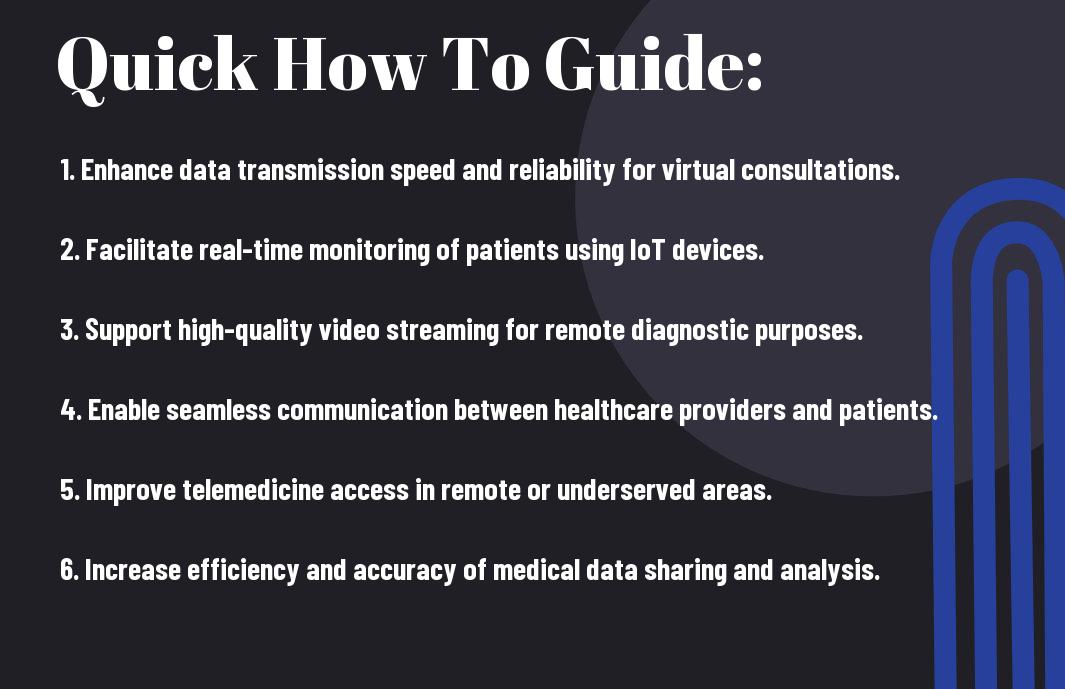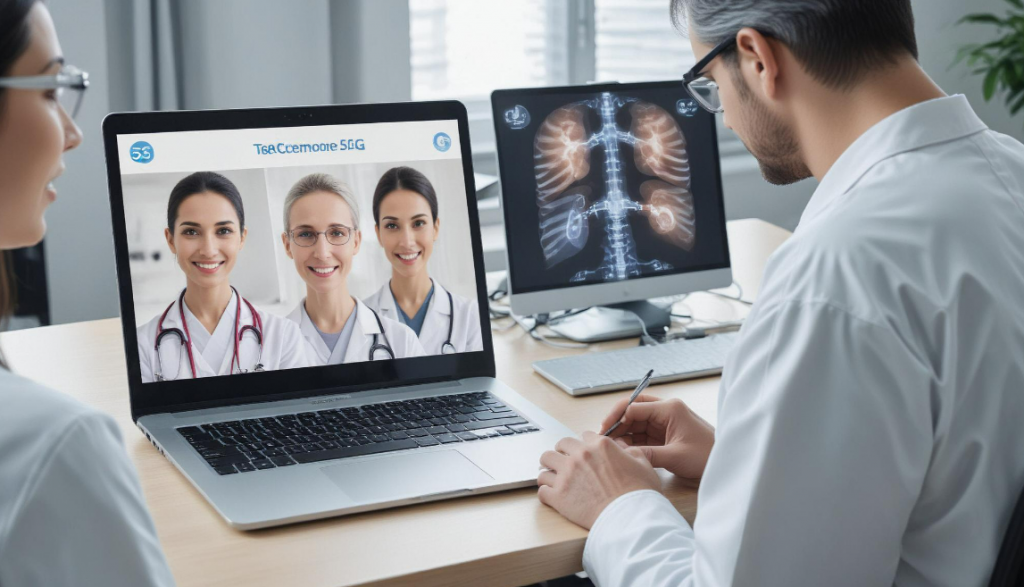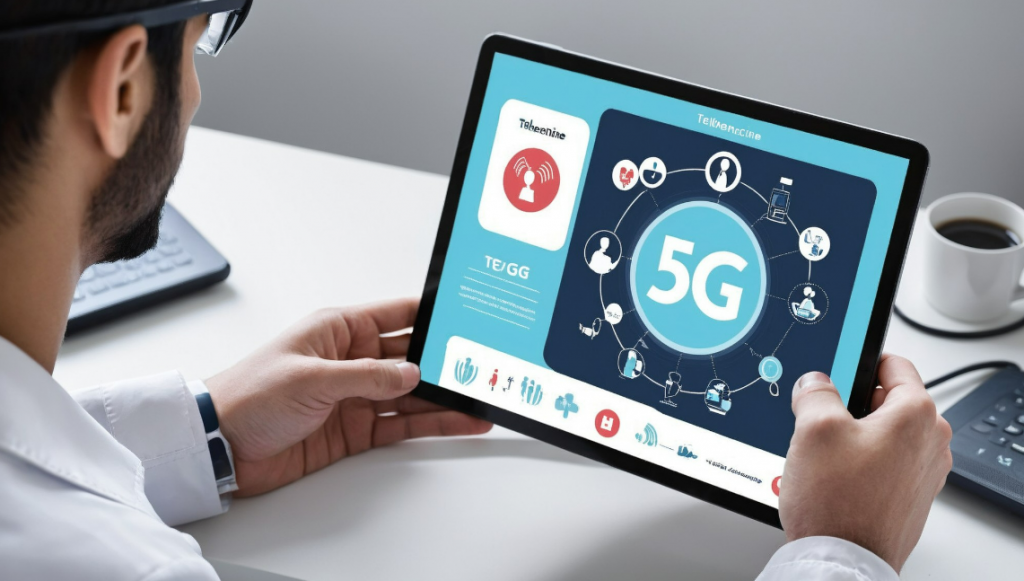What Role Will 5G Technology Play In Telemedicine Just imagine the possibilities that 5G technology can bring to the world of telemedicine. With lightning-fast speeds and lower latency, 5G has the potential to revolutionize remote healthcare services. Imagine real-time consultations with medical professionals from anywhere, seamless transmission of medical data, and advanced possibilities for diagnosis and treatment. Stay tuned as I investigate into the game-changing impact 5G will have on telemedicine!
Table of Contents

How to Harness the Power of 5G for Telemedicine
Understanding the Capabilities of 5G Networks
Capabilities: Before entering into harnessing the power of 5G for telemedicine, it’s crucial to understand the vast capabilities of 5G networks. With its ultra-fast speeds, low latency, and high reliability, 5G has the potential to revolutionize the way healthcare services are delivered remotely.
Tips for Integrating 5G into Existing Telemedicine Infrastructure

Tips for Integrating 5G into Existing Telemedicine Infrastructure: With the implementation of 5G technology in telemedicine, it’s imperative to carefully integrate it into existing infrastructure. Here are some key tips to help you seamlessly incorporate 5G into your telemedicine operations:
- Assess your current telemedicine setup and identify areas where 5G can enhance efficiency and effectiveness.
- Collaborate with your IT team to ensure a smooth transition to 5G technology.
- Invest in training for staff to maximize the benefits of 5G in telemedicine.
Any successful integration of 5G into telemedicine infrastructure requires careful planning and execution.
Factors to Consider When Implementing 5G in Telemedicine
One of the key considerations when implementing 5G technology in telemedicine is ensuring seamless connectivity and low latency for real-time interactions. It is imperative to assess network coverage and reliability to guarantee consistent access to healthcare services. Additionally, evaluating the scalability of the infrastructure to accommodate the increasing volume of data transmission is crucial for the success of telemedicine initiatives.
Ensuring Data Security and Patient Privacy

To safeguard patient information in the era of 5G telemedicine, stringent measures must be in place to secure data transmissions and storage. Encryption protocols and access controls should be implemented to prevent unauthorized disclosure of sensitive medical records. Regular security audits and updates are necessary to address emerging threats and vulnerabilities, ensuring the confidentiality and integrity of patient data.
Addressing Concerns about Interoperability and Standardization
The seamless integration of disparate healthcare systems and devices is imperative for the efficient delivery of telemedicine services over 5G networks. Standardizing data formats and communication protocols is crucial to enable interoperability between various platforms and facilitate information exchange between healthcare providers. Collaborating with industry partners and regulatory bodies can help establish common standards and guidelines to ensure a cohesive telemedicine ecosystem.
Understanding the importance of interoperability and standardization can streamline telemedicine workflows and enhance the quality of patient care. By fostering collaboration and adopting industry best practices, healthcare organizations can overcome barriers to interoperability and leverage 5G technology to its full potential in revolutionizing remote healthcare delivery. Thou, aligning with regulatory mandates and participating in interoperability initiatives are key steps to ensure the seamless integration of telemedicine solutions across different healthcare settings.
How to Leverage 5G for Remote Patient Monitoring
Once again, when it comes to remote patient monitoring, 5G technology will revolutionize the way healthcare providers track and manage their patients. The high-speed, low-latency capabilities of 5G networks will enable real-time data transmission and seamless communication between medical devices and healthcare professionals, ultimately improving patient outcomes and reducing healthcare costs.
The Role of IoT Devices in Real-Time Health Monitoring
You can leverage 5G technology to connect a network of IoT devices, such as wearables and sensors, for continuous health monitoring. These devices can collect a wealth of real-time health data, including vital signs, activity levels, and medication adherence, enabling healthcare providers to make timely interventions and personalized treatment plans.
Strategies for Analyzing and Interpreting Remote Patient Data
Monitoring remote patient data requires robust strategies for data analysis and interpretation. By leveraging artificial intelligence and machine learning algorithms, healthcare professionals can identify patterns, trends, and anomalies in patient data to make accurate diagnoses and personalized healthcare recommendations. Monitoring these insights can lead to better treatment outcomes and improved patient satisfaction.
Tips for Overcoming Barriers to 5G Adoption in Telemedicine
After discussing the potential of 5G technology in revolutionizing telemedicine, it’s important to address the barriers that may hinder its widespread adoption. By overcoming these challenges, we can harness the full potential of 5G in transforming healthcare delivery.
Addressing Infrastructure and Cost Concerns
Barriers such as inadequate infrastructure and the high cost of implementing 5G technology can be challenging. However, through strategic partnerships with telecommunication companies and government initiatives, we can work towards expanding 5G networks and making telemedicine more accessible and cost-effective.
Educating Healthcare Professionals about 5G Capabilities
Some healthcare professionals may be unaware of the capabilities of 5G technology in telemedicine. It’s crucial to provide training and education on how 5G can enhance remote consultations, real-time monitoring, and patient care. This knowledge can empower healthcare providers to embrace 5G and leverage its benefits in their practice.
For instance, 5G offers low latency and high-speed connectivity, allowing for real-time interactions and quick data transfer in telemedicine applications. By understanding these advantages, healthcare professionals can optimize their telehealth services and deliver quality care to patients.
Conclusion
Now imagine a world where you can receive real-time medical care from the comfort of your own home. With the seamless connectivity and high speed of 5G technology, telemedicine is set to revolutionize healthcare by allowing doctors to diagnose and treat patients remotely. The role that 5G will play in telemedicine is vital, as it will enable faster communication, better data transfer, and improved patient care, ultimately leading to enhanced health outcomes for individuals around the world.
FAQ
Q: How will 5G technology impact telemedicine services?
A: 5G technology will significantly enhance telemedicine services by providing faster and more reliable connectivity, high-quality video streaming for virtual consultations, and real-time monitoring of patients’ health data.
Q: What are the key benefits of implementing 5G in telemedicine?
A: The key benefits of implementing 5G in telemedicine include improved access to healthcare services in remote areas, reduced latency for better real-time interactions between healthcare providers and patients, and the ability to support emerging technologies like virtual reality for immersive telehealth experiences.
Q: How will 5G technology contribute to the future of telemedicine?
A: 5G technology is expected to revolutionize the future of telemedicine by enabling advanced applications such as remote surgery, robotic-assisted procedures, and augmented reality tools for enhanced medical training. It will also pave the way for personalized medicine and precision healthcare through the seamless integration of big data analytics and IoT devices in telehealth platforms.
